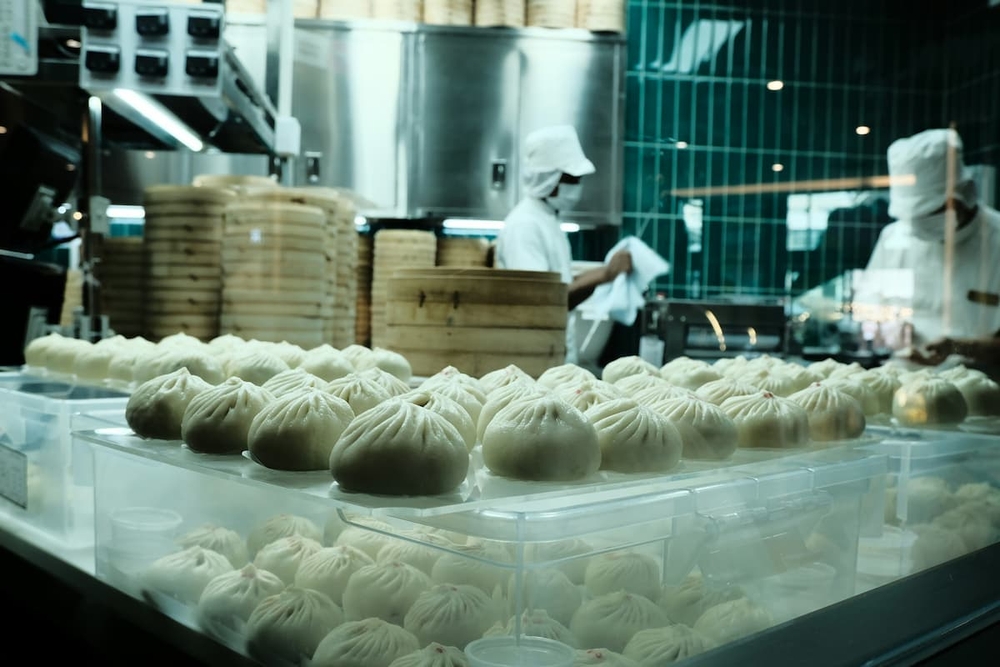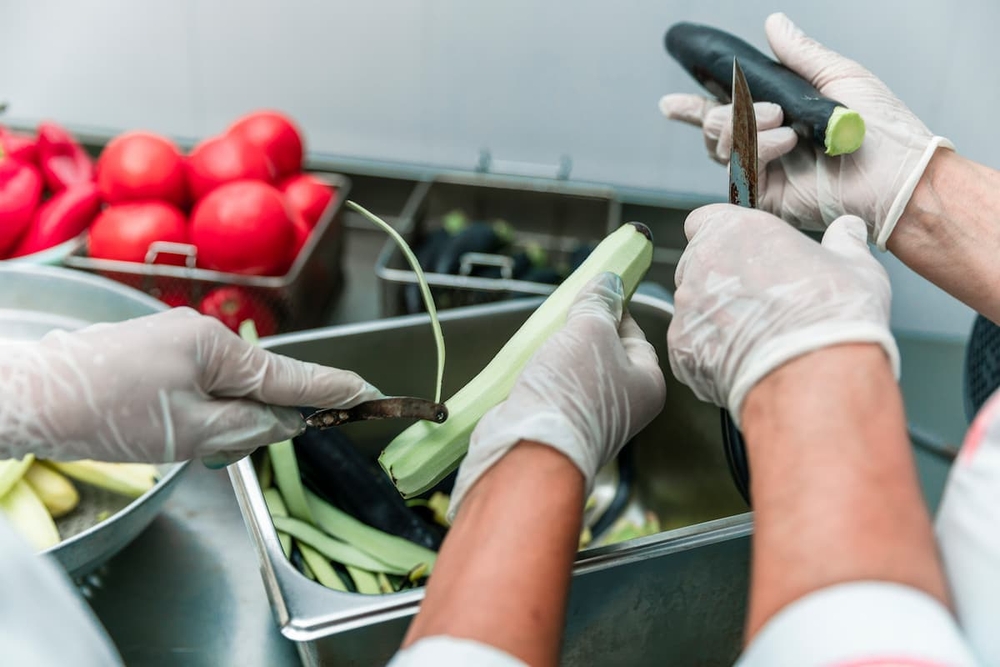Optimizing small batch food production: Choosing the ideal kitchen layout
Table of Contents
CloudKitchens
How many tacos can be delivered from a 1000sqft restaurant?
The same amount as a 200sqft ghost kitchen.
In the realm of culinary arts, small batch food production has emerged as a preferred method for many chefs and food entrepreneurs. This approach emphasizes quality, customization, and flexibility, catering to niche markets and discerning customers. However, to maximize the benefits of small batch production, selecting the appropriate kitchen layout is necessary. An efficient kitchen design not only streamlines operations but also ensures consistency and safety in food preparation.
Understanding small batch food production
Small batch food production refers to the process of preparing food in limited quantities, typically with a focus on quality, customization, and culinary craftsmanship. Unlike mass production models, where thousands of portions may be prepped and packaged at once, small batch kitchens prioritize precision, flavor, and consistency over volume.
This method is often associated with artisanal offerings, specialty diets, or gourmet meal solutions that require attention to detail and ingredient integrity. Operators have tighter control over sourcing, preparation, and presentation, enabling them to deliver highly curated experiences.
Whether it’s organic meal prep services, low-FODMAP snacks, or chef-driven menus for delivery-only brands, small batch production gives food entrepreneurs the flexibility to refine recipes, adjust to customer preferences, and innovate quickly.
Read more: How CloudKitchens helps brands expand into new delivery markets in America
Advantages of small batch production
Small batch food production is gaining traction among modern food entrepreneurs, chefs, and delivery-first restaurant concepts. This method emphasizes producing limited quantities of food at a time, offering a wide range of operational, financial, and branding advantages. Below are the key benefits of adopting a small batch production strategy in a commercial or ghost kitchen setting:
Improved quality control
With smaller production volumes, food businesses can more easily monitor ingredient freshness, cooking techniques, and final presentation. This level of control helps maintain consistent flavor profiles and product quality, which is critical for building customer trust and retention in the food delivery market.
Flexibility in menu innovation
Small batch production enables fast adaptation to trends, seasons, or customer feedback. Unlike mass production, which locks businesses into large quantities of a single product, small batches allow operators to test new dishes or ingredients without significant financial risk. This agility is ideal for ghost kitchens looking to rotate menus or launch pop-up concepts.
Reduced food waste
Producing smaller quantities based on real-time demand or pre-orders minimizes overproduction and spoilage. This not only cuts costs but also aligns with sustainability goals, something increasingly important to today’s environmentally conscious consumers.
Read more: How to eliminate food waste in restaurants
Lower startup and operational costs
Businesses entering the market through a shared-use kitchen or commissary kitchen benefit from lower upfront investments. Equipment, space, and utilities are shared among users, making it more feasible to operate a lean production model. This is especially useful for startup caterers, meal prep services, and virtual brands testing new concepts.
Enhanced customer satisfaction
Customers appreciate freshness and variety. Small batch production supports both by enabling frequent menu updates and ensuring meals are made closer to the time of delivery. It also allows for personalization, an attractive feature for consumers ordering direct-to-consumer or custom meal prep services.
Easier compliance and traceability
With fewer ingredients and tighter batch sizes, it becomes easier to trace sources in case of recalls or allergen issues. Documentation and reporting processes also become more manageable, particularly in regulated environments like New York City or California where food safety standards are strict.
Read more: Need help getting your kitchen licensed in New York? Here’s where to start
Supports artisanal and premium branding
If your business model is built on high-end, artisanal, or specialty foods (e.g., gluten-free, vegan, keto), small batch production reinforces that positioning. Consumers often associate small batches with higher quality, authenticity, and craftsmanship — attributes that justify premium pricing.
Better use of ghost kitchen capabilities
In ghost kitchen models like those offered by CloudKitchens, where space and equipment are optimized for efficiency, small batch production allows multiple concepts or menu items to operate concurrently. This maximizes kitchen usage while maintaining brand individuality across different food offerings.
Read more: Smart strategies to test and validate your food product before launching and scaling
Top kitchen layouts for small batch food production
1. Galley Kitchen Layout
The galley layout features two parallel workspaces, allowing for a streamlined workflow. This design is particularly effective in narrow spaces and is commonly used in food trucks and small restaurants.
Benefits:
- Efficiency: Minimizes movement between stations.
- Space-Saving: Ideal for limited areas.
- Cost-Effective: Simplified design reduces construction and maintenance costs.
2. L-Shaped Kitchen Layout
An L-shaped kitchen utilizes two adjoining walls, providing ample counter space and flexibility. This layout is suitable for corner spaces and allows for easy expansion.
Benefits:
- Versatility: Accommodates various appliances and workstations.
- Open Space: Facilitates interaction and movement.
- Adaptability: Can be modified to include dining or additional prep areas.
3. Assembly Line Layout
The assembly line layout arranges workstations in a linear sequence, ideal for repetitive tasks and high-volume production. This design enhances speed and consistency.
Benefits:
- Productivity: Streamlines repetitive processes.
- Consistency: Ensures uniformity in product output.
Scalability: Easily adjusted to accommodate increased demand.
Now, to simplify, check a simple comparison of each layout:
| Layout Type | Description | Ideal For | Key Benefits | Limitations |
| Galley | Two parallel counters/workspaces creating a corridor-like flow | Food trucks, narrow spaces, compact kitchens | – Highly efficient workflow - Minimizes movement between stations- Cost-effective | Can feel cramped for multiple staffLimited flexibility for scaling |
| L-shaped | Two adjoining walls used to form an “L” configuration | Corner kitchen spaces, shared-use kitchens | – Versatile appliance arrangement - Facilitates team collaboration - Easily expandable | May require more square footage than galley |
| Assembly line | Stations arranged in a straight sequence based on workflow | High-throughput prep, delivery-based operations | – High consistency - Designed for speed - Scales easily with demand | Less flexible for varied or artisanal menus |
Read more: When is the right time to scale to a high-volume kitchen?
Integrating CloudKitchens into your small batch production
CloudKitchens offers innovative solutions tailored for small batch food producers. By providing state-of-the-art kitchen spaces equipped with modern amenities, CloudKitchens enables culinary entrepreneurs to focus on their craft without the overhead of traditional restaurant setups.
By partnering with CloudKitchens, small batch food producers can scale their operations, reach broader markets, and maintain the quality and uniqueness that define their brand.
In conclusion, selecting the right kitchen layout is crucial for the success of small batch food production. By understanding your specific needs and leveraging solutions like those offered by CloudKitchens, you can create an efficient, compliant, and productive culinary workspace. Check all our solutions!
DISCLAIMER: This information is provided for general informational purposes only and the content does not constitute an endorsement. CloudKitchens does not warrant the accuracy or completeness of any information, text, images/graphics, links, or other content contained within the blog content. We recommend that you consult with financial, legal, and business professionals for advice specific to your situation.
More insights & stories
There’s more where that came from.
Get in the know and check out our additional insights


